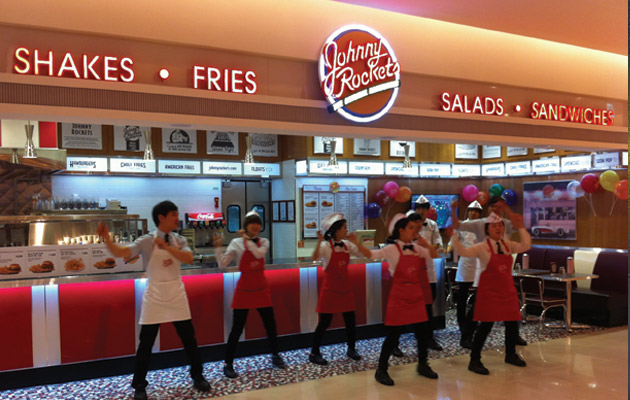U.S. Chains Share Valuable Lessons Learned in Going Global
All over the world, middle-class urban populations continue to grow. Their newly attained disposable incomes provide a multitude of global expansion opportunities for restaurant chains based in the United States. Best of all, these new consumers are finding an appetite for foods beyond their native dishes. New menus, especially fast-food fare, now attract diners in almost every corner of the globe.
Technomic states in its 2012 "Top 500 Chain Restaurant Report" that 161, or 32 percent, of the Top 500 chains were operating units in international locations in 2011. Chains are targeting the BRIC countries — Brazil, Russia, India and China — but they also have significant interest in other nations. Upward mobility is occurring in the middle classes "from Indonesia to Turkey to South Africa to Mexico," the report says. This trend, along with saturation and slow growth in the U.S. market, continues to spur new plans for global expansion.
According to Technomic, international sales for the Top 500 restaurant chains increased by 12.2 percent in 2011, with a unit increase of 6.4 percent. By comparison, domestic unit growth for these chains was 0.6 percent for 2010 and for 2011. U.S. sales growth for chains with international business was 4.6 percent.
It's clear that the rewards of global expansion are significant when companies do it right. Fred LeFranc, founder of Results Thru Strategy, works with U.S. chains in an advisory capacity on growth strategies in both domestic ddddddand international markets. He has been on three trade missions with a number of companies investigating opportunities in India, South America, Southeast Asia and Indonesia.
LeFranc says that these countries love American brands. "They see America as a place of hope and optimism, where they can achieve something," he says. He points out that many countries have cultural restrictions on mobility and often people don't have the money to travel to the United States. "They still want a piece of America," he explains, "and they get this by buying an American brand."
He also explains that most countries are in different stages of development in terms of eating out. "It's like here 50 years ago," he says. "People still eat at home, but they are starting to want to eat out and when they do they want something unique and affordable." American chains provide both.
As for foreign cultures accepting American-type menu items, he draws an analogy to sushi's popularity in the United States. "When it first arrived, it was only found in a few places. Now, it's everywhere. It's the same with our products overseas."
LeFranc sees a strong, upward trend in international expansion of U.S. chains. While restaurant chains face many challenges to doing business in most any foreign country, these are the mechanics, he says, and the chain can master them. He is bullish on the ongoing opportunity for those companies that are willing to learn and execute strategically.
As long as chains pay heed to the three major challenges learned through experience by international development teams, there is a strong opportunity for growth in global markets. Not paying heed to the challenges will result in failure at a number of different levels, from locating the right real estate to the final decision on menu items. Finding the right local partners is paramount. These partners can aid in addressing the other two major challenges: local supply chain and the local culinary culture. Once these issues are resolved, U.S. chains have access to growth markets that have the potential to turn into rewarding long-term revenue streams.
The following pages contain case studies on Denny's, Rita's Italian Ice, Focus Brands, and Johnny Rockets.
- Prev
- Next

